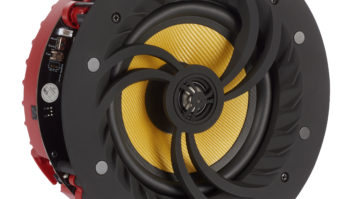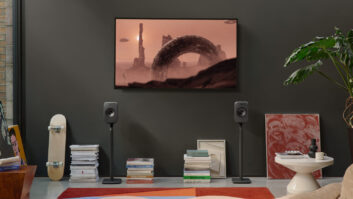Chula Vista, Calif. — Startup Soundcast Systems has developed a wireless-audio system said to transmit music, interference-free, from docked iPods and MP3 players up to 150 feet in the home to one or more sound systems.
The company’s iCast system is designed exclusively for iPods, and the Audiocast system is intended for all other brands of MP3 players. Both systems consist of an arch-shaped docking station/transmitter and companion arch-shaped receiver, which connects to any audio system in the home.
Soundcast’s products will overcome the industry perception that wireless isn’t capable of delivering noise-free high-fidelity music around the house, said sales and marketing VP Rusty Bennett, formerly with Phoenix Gold, Seiko and Aiwa. They’re also easier to set up and use than the majority of similar products, which are based on 802.11 wireless-network technologies or Bluetooth, Bennett contended.
Wireless 802.11 solutions, he explained, force users to load software on a PC and choose an IP address for the device, he said. Bluetooth-equipped iPod accessories sometimes link automatically to Bluetooth-equipped cell phones, requiring users to manually re-select a target device. Bluetooth solutions are also limited to about 10 feet in practical situations, he added.
The company, owned by contract manufacturer KSC Industries, is focused on developing wireless audio and plans additional products, including wireless surround-speaker systems for home theater use. Its first products, however, focus on wireless distribution of MP3 player audio because of the MP3 market’s growth and retailers’ needs for high-margin products that can be added onto the sale of a 10- to 15-point iPod, said Bennett.
The company plans to support the launch with trade and consumer advertising in the summer and with co-op and MDF funds, Bennett said.
The iCast receiver/transmitter bundle retails for a suggested $299. Additional iCast receivers are $129 each. An Audiocast bundle retails for a suggested $249, with additional receivers costing $119 each. They will be available online and to retailers in April.
When connected to a PC, the iCast and Audiocast systems also transmit compressed music in any format from the PC to sound systems in other rooms. Unlike most other systems that connect to a PC, however, no software setup is required, Bennett noted.
Here’s how Soundcast avoids interference with 2.4GHz cordless phones, microwave ovens and wireless IEEE 802.11b/g networks:
Soundcast devices combine digital 2.4GHz adaptive frequency-hopping spread spectrum technology with proprietary application software to scan the 40 channels available in the unlicensed 2.4GHz band. The devices then transmit on the 15 strongest channels available in a user’s home, continuously scanning all 40 channels and selecting new ones on which to transmit if a channel’s signal strength changes.
Next, the devices’ wireless transmissions hop around any of the currently selected 15 channels that might experience intermittent interference when, for example, a microwave oven is turned on or a cordless phone call is placed. Once a Soundcast device senses interference in a channel, it will almost instantaneously hop out of that channel and avoid using that channel in the future. When the devices hop channels, consumers won’t hear music dropouts because the hops are quick, and the devices use “a little [memory] buffer,” Bennett explained.
Soundcast’s transmitters convert music from analog to digital PCM for transmission to receivers, which reconvert the music to analog.
Although the iCast and AudioCast systems share the same wireless architecture, they differ in some respects. The iCast dock uses interchangeable inserts to mate with all but first-generation iPods. The iCast dock also charges iPods. Audiocast docks don’t recharge MP3 players, which must be connected via the player’s headphone or line output.
The iCast receiver remotely controls select iPod functions, which are pause/play and track up/down. The Audiocast receiver lacks MP3 player controls.
When the transmitters are used to broadcast a PC’s music, neither receiver will remotely control PC playback.
Both systems offer different levels of multiroom capability. One iCast transmitter can deliver the same song simultaneously to two separate receivers. In addition, two iCast transmitters, each with their own iPod, can transmit two separate songs simultaneously, and songs can be received by up to three receivers. In contrast, two Audiocast transmitters can be connected to the same MP3 player to broadcast one song at a time to up to four receivers.
Another system in development, perhaps available late this year, would incorporate amplifiers into a receiver for connection to any pair of passive speakers. Later on, Soundcast hopes to incorporate speakers and amplifiers into a receiver and create a 2.1-channel wireless speaker system that can be used with any home theater system to replace wired surround speakers, Bennett said.













